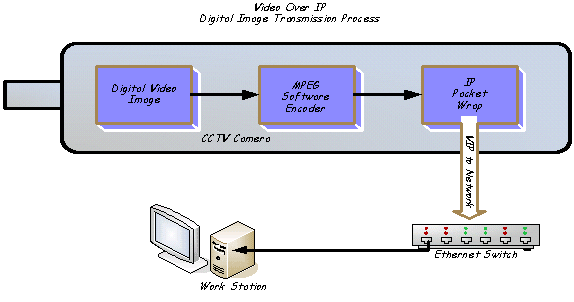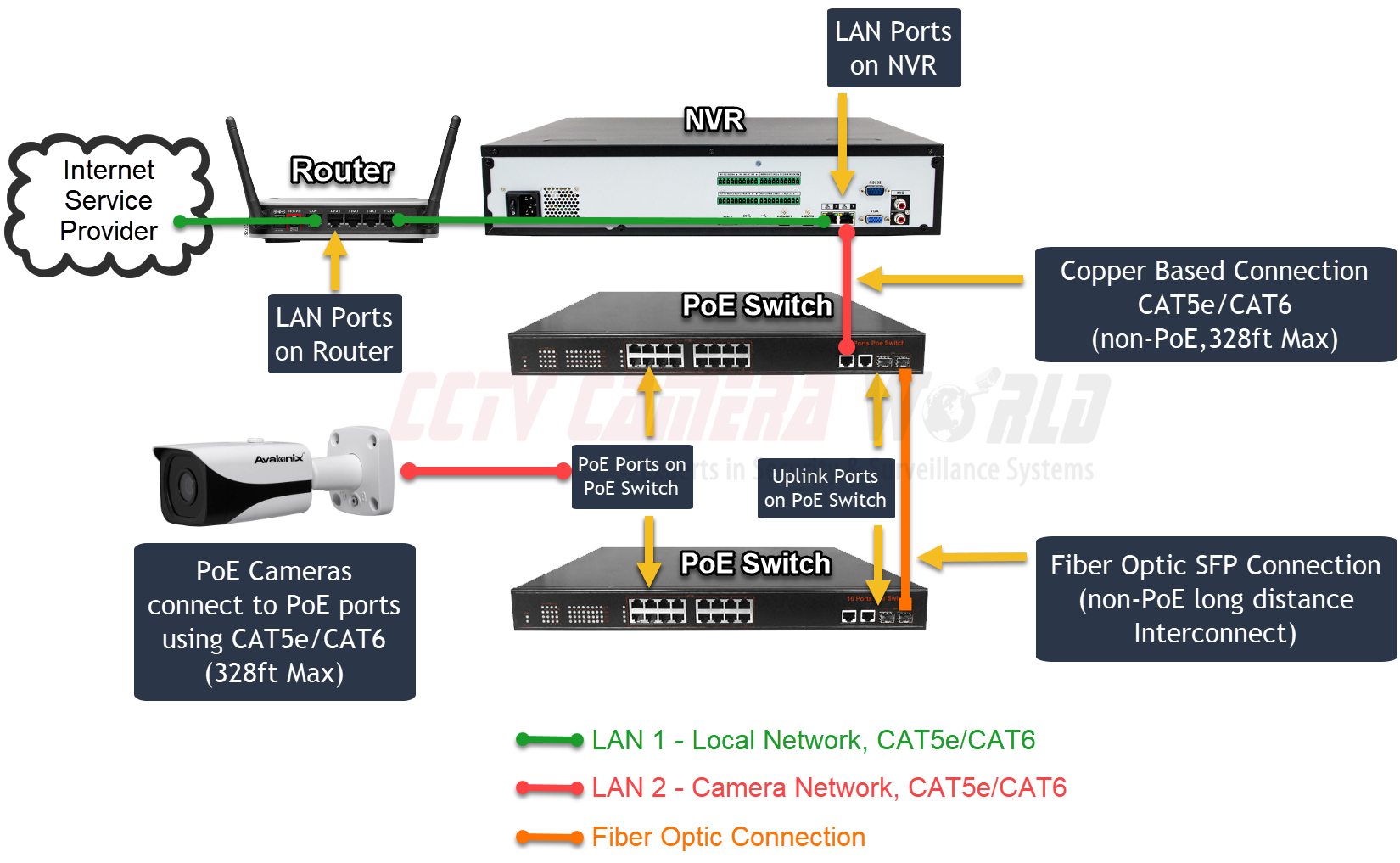Why CCTV Fibre Optic Cable is the Future of Fast Security Systems
Why CCTV Fibre Optic Cable is the Future of Fast Security Systems
Blog Article
Just How CCTV Cameras With Fiber Optic Output Boost Long-Distance Monitoring
CCTV cameras outfitted with fiber optic result represent a significant improvement in long-distance surveillance innovation, offering unparalleled advantages over typical systems. By leveraging the residential or commercial properties of light transmission via fiber optics, these cameras make sure high-def video high quality continues to be intact across considerable distances while efficiently minimizing electromagnetic disturbance. This innovation not only boosts image clearness yet also improves installment procedures and resource allocation. As we check out the effects of this technology, one need to take into consideration just how these developments are reshaping the landscape of protection and surveillance systems in various applications.

Understanding Fiber Optic Innovation
Fiber optic innovation is increasingly made use of in long-distance tracking applications as a result of its outstanding capability for data transmission. This technology employs slim hairs of glass or plastic fibers to transfer information as light signals, considerably decreasing the depletion typically connected with traditional copper cable televisions. The inherent residential or commercial properties of fiber optics enable the transmission of huge quantities of information over substantial distances without loss of quality, making it a perfect option for applications calling for reliable interaction.
The concept of complete interior representation helps with the efficient transmission of light within the fiber, ensuring high bandwidth and speed. Unlike electric signals in metal cords, fiber optics are unsusceptible to electro-magnetic interference, boosting the integrity of information transmission. This particular is especially valuable in atmospheres with high degrees of electrical noise, such as commercial setups or metropolitan locations.
Additionally, fiber optic wires are lighter and a lot more flexible than their copper counterparts, which streamlines installation and minimizes structural tons. With their resilience and resistance to ecological factors, fiber optics are fit for outside applications, therefore extending the reach of monitoring systems. As an outcome, fiber optic modern technology is becoming a foundation in modern surveillance options, effectively addressing the difficulties of long-distance surveillance.
Benefits of Fiber Optic CCTV
Using fiber optic innovation in CCTV systems supplies numerous advantages that improve monitoring capacities. Among the primary benefits is the capacity to transmit high-definition video over fars away without considerable signal destruction. Unlike traditional copper cable televisions, fiber optics can preserve video top quality over extensive runs, making them excellent for huge buildings or remote surveillance areas.
In addition, fiber optic wires are much less prone to electromagnetic interference, which can distort signals in traditional systems. This guarantees clearer images and uninterrupted solution, essential for security surveillance. Fiber optics are inherently more protected, as intercepting signals calls for specific equipment, therefore offering an extra layer of defense versus unauthorized gain access to.
The lightweight and compact nature of fiber optic wires likewise simplifies setup, allowing simpler routing through limited areas and minimizing general labor prices. Their sturdiness makes them resistant to ecological variables such as wetness and temperature changes, prolonging the life expectancy of the security system.
Lastly, fiber optic systems can support a higher number of video cameras on a solitary network, optimizing sources and offering scalability for future growth. These advantages make fiber optic CCTV systems an exceptional selection for modern-day surveillance demands.
Comparison With Standard Equipments
When comparing CCTV systems, standard arrangements frequently drop brief in numerous key areas, particularly in terms of range and signal stability. Conventional coaxial cable television systems commonly face considerable signal degradation why not find out more over fars away, restricting reliable monitoring ranges to roughly 300 feet (cctv fibre optic cable). Yet threshold, picture clearness reduces, bring about possible dead spots and minimized monitoring performance
On the other hand, fiber optic systems maintain signal integrity over much greater distances, typically going beyond numerous miles without loss of top quality. This is largely due to their capacity to send information as light signals, which are much less vulnerable to electromagnetic interference than electrical signals made use of in traditional systems.
In addition, typical systems need a lot more comprehensive maintenance and troubleshooting due to their susceptability to ecological elements such as moisture and electro-magnetic sound. Fiber optic systems, on the other hand, offer improved resilience and lower upkeep costs, as they are much less prone to damage.
Applications in Long-Distance Surveillance
The advantages of contemporary CCTV systems in keeping signal stability over long distances open up a vast array of applications for long-distance surveillance. One substantial application is in metropolitan surveillance, where communities release fiber optic CCTV systems to keep track of public rooms, enhancing safety and security and discouraging criminal task. These systems supply continual, premium video feeds that are important for reliable police and emergency response.
An additional vital application remains in industrial settings, where remote tracking of manufacturing procedures and unsafe locations is important. Fiber optic CCTV can withstand extreme atmospheres and send information over cross countries without loss of top quality, enabling for real-time oversight and reducing risks to employees.
Additionally, critical facilities such as airport terminals, railways, and pipelines gain from long-distance CCTV tracking. Security groups can manage large areas from streamlined control spaces, making certain rapid response to any kind of cases.
In addition, in agricultural settings, farmers make use of long-distance CCTV to keep track of plants and livestock, assisting to boost important site productivity and security. In general, the flexibility and reliability of fiber optic CCTV systems make them important across numerous markets, allowing thorough surveillance services customized to particular Discover More needs.
Future Patterns in Surveillance Modern Technology
How will innovations in innovation improve the landscape of monitoring? The future of surveillance technology is poised for considerable transformation, driven by developments such as man-made knowledge (AI), artificial intelligence, and edge computing. These innovations enable real-time data analysis, permitting rapid recognition of possible dangers and improved situational recognition.
AI-powered analytics will boost the accuracy of facial acknowledgment systems, decreasing incorrect positives and making it possible for a lot more efficient tracking of people. Additionally, the assimilation of Internet of Things (IoT) tools will certainly help with a smooth network of interconnected security systems, enhancing tracking capacities across huge locations.
Another fad is the shift towards cloud-based storage space remedies, which offer scalable data management and availability. This will certainly permit companies to store huge quantities of video clip information without the constraints of physical storage space, while making certain that details is easily retrievable.

Conclusion
To conclude, CCTV cameras equipped with fiber optic result stand for a considerable improvement in long-distance tracking capabilities. The utilization of fiber optic modern technology makes certain high-def video transmission over extensive distances without quality destruction, while additionally supplying immunity to electro-magnetic disturbance. The lightweight and flexible nature of these systems facilitates structured setup and resource optimization. As security innovation continues to evolve, the fostering of fiber optic options will likely play a critical role in boosting safety throughout diverse applications.
Report this page